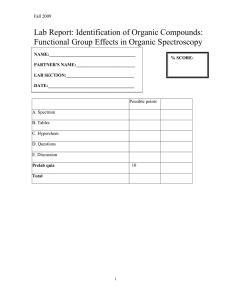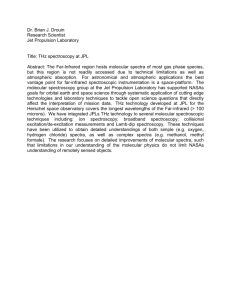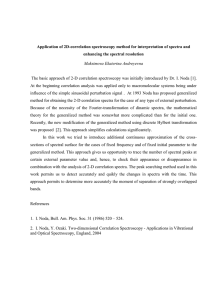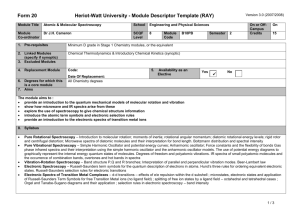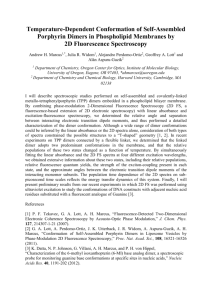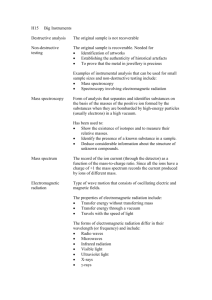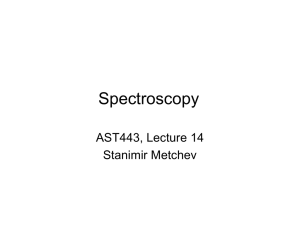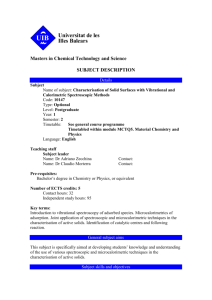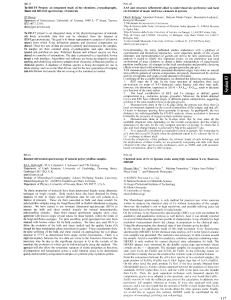Chapter 6 Conclusions
advertisement
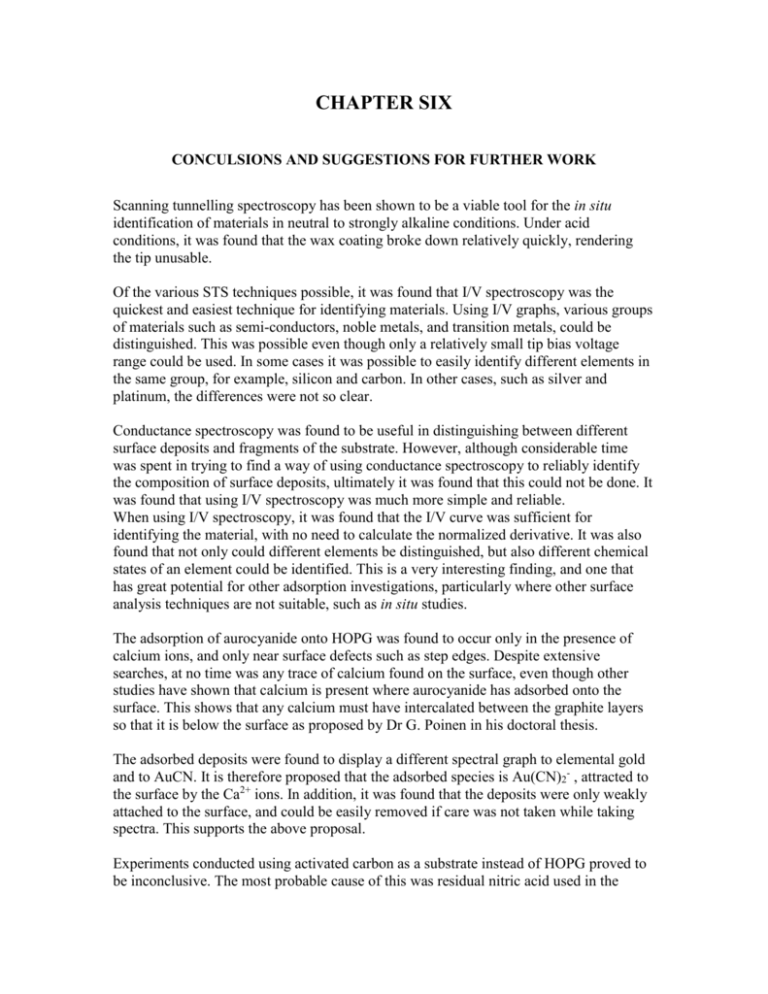
CHAPTER SIX CONCULSIONS AND SUGGESTIONS FOR FURTHER WORK Scanning tunnelling spectroscopy has been shown to be a viable tool for the in situ identification of materials in neutral to strongly alkaline conditions. Under acid conditions, it was found that the wax coating broke down relatively quickly, rendering the tip unusable. Of the various STS techniques possible, it was found that I/V spectroscopy was the quickest and easiest technique for identifying materials. Using I/V graphs, various groups of materials such as semi-conductors, noble metals, and transition metals, could be distinguished. This was possible even though only a relatively small tip bias voltage range could be used. In some cases it was possible to easily identify different elements in the same group, for example, silicon and carbon. In other cases, such as silver and platinum, the differences were not so clear. Conductance spectroscopy was found to be useful in distinguishing between different surface deposits and fragments of the substrate. However, although considerable time was spent in trying to find a way of using conductance spectroscopy to reliably identify the composition of surface deposits, ultimately it was found that this could not be done. It was found that using I/V spectroscopy was much more simple and reliable. When using I/V spectroscopy, it was found that the I/V curve was sufficient for identifying the material, with no need to calculate the normalized derivative. It was also found that not only could different elements be distinguished, but also different chemical states of an element could be identified. This is a very interesting finding, and one that has great potential for other adsorption investigations, particularly where other surface analysis techniques are not suitable, such as in situ studies. The adsorption of aurocyanide onto HOPG was found to occur only in the presence of calcium ions, and only near surface defects such as step edges. Despite extensive searches, at no time was any trace of calcium found on the surface, even though other studies have shown that calcium is present where aurocyanide has adsorbed onto the surface. This shows that any calcium must have intercalated between the graphite layers so that it is below the surface as proposed by Dr G. Poinen in his doctoral thesis. The adsorbed deposits were found to display a different spectral graph to elemental gold and to AuCN. It is therefore proposed that the adsorbed species is Au(CN)2- , attracted to the surface by the Ca2+ ions. In addition, it was found that the deposits were only weakly attached to the surface, and could be easily removed if care was not taken while taking spectra. This supports the above proposal. Experiments conducted using activated carbon as a substrate instead of HOPG proved to be inconclusive. The most probable cause of this was residual nitric acid used in the decontamination process. This is one area where further work is required, as persistently the question has been raised as to the relevance of using HOPG. Is the adsorption process the same? I/V spectroscopy should be able to answer this question by identifying the spectral signature of deposits on untreated activated carbon. Other work that could be pursued could include the obtaining of a larger range of I/V spectra, both in air and under liquid. These spectra could be compared to spectra obtained in UHV conditions to determine if the air or liquid had any effect on the spectra. Such spectra would also provide a greater baseline to allow the use of I/V spectroscopy to investigate wider range of adsorption processes where activated carbon is used as a substrate. One example of this would be the use of activated carbon to remove iron from groundwater.
